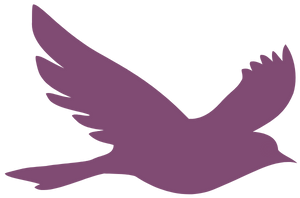The Boy Who Loved Math: The Improbable Life of Paul Erdos
Paul Erdős was born in Hungary in 1913. He loved numbers and was profoundly gifted in math, although he had trouble with everyday tasks like doing laundry and buttering his toast. This story tells about how he made a way for himself in the world and helped many people along the way.
The Boy Whose Head Was Filled With Stars: A Life of Edwin Hubble
Edwin Hubble was born in the United States in 1889. As a boy who was fascinated by the stars he "surmounted many hurdles to follow his dreams of becoming an astronomer. Using the insights of great mathematicians and endlessly observing the sky, he succeeded in confirming two things that altered human life forever: that there are more galaxies than our own, and that the universe is always expanding. Hubble’s message to us is to find peace in the vastness of the mystery surrounding us, and to be curious."
Gordon Parks: How the Photographer Captured Black and White America
Gordon Parks was born in the United States in 1912. Told in verse, this story tells how his life was changed when he purchased a camera and realized he could use his photographs to take a stand against racism and injustice. He would go on to become the first black director in Hollywood.
Itzhak: A Boy Who Loved the Violin
Itzhak Perlman was born in Israel in 1945. As a child he was surrounded by beautiful music in his home and he began to play the violin when he was 4. Music became even more central in his life when he became paralyzed after contracting polio. "Never letting his disability hold him back, Itzhak left his hometown at age thirteen to play on The Ed Sullivan Show in New York City. Today he is widely considered one of the world's greatest violinists."
Manfish: A Story of Jacques Cousteau
Jacques Cousteau was born in France in 1910. He loved the water which filled him with wonder. He would go on to co-invent the first successful Aqua-Lung which enabled him to explore further beneath the sea for longer periods of time.
Pablo Neruda: Poet of the People
Pablo Neruda was born Ricardo Eliecer Neftalí Reyes Basoalto in 1904 in Chile. He loved to read and he loved nature and people. He decided to become a writer and wrote poems capturing the beauty of the everyday things around him that he loved. He began publishing his poems at the age of 16 and would go on to win the Nobel Prize in Literature in 1971.
Paper Son: The Inspiring Story of Tyrus Wong, Immigrant and Artist
Tyrus Wong was born Wong Geng Yeo in China in 1910. At the age of 9 he immigrated to the United States with his father as a "paper son". He was detained and interrogated for over a month in a cell at the Angel Island Immigration Station. He would go on to become an accomplished painter and animator, at one point working for Disney and bringing the film Bambi to life.
Passage to Freedom: The Sugihara Story
Chiune Sugihara was born in Japan in 1900. In 1940 he was living in Lithuania as the Japanese consul and received petitions from hundreds of Jewish refugees from Poland who were attempting to escape the Nazis. This story, told through the eyes of his 5-year old son, describes how he made the decision to do everything he could to save as many people as he could.
Schomburg: The Man Who Built a Library
Arturo Schomburg was born in Puerto Rico in 1874 and moved to the United States in 1891. "His life's passion was to collect books, letters, music, art from Africa and the African diaspora in order to bring to light the achievements of people of African descent. When his collection became so large that it threatened to overflow his house, he turned to the New York Public Library. At the time, the collection, with Schomburg as curator, was the cornerstone of a new Division of Negro History, Literature and Prints. A century later, it is the Schomburg Center for Research in Black Culture—and a beacon for scholars all over the world."
Sprouting Wings: The True Story of James Herman Banning, the First African American Pilot to Fly Across the United States
James Herman Banning was born in the United States in 1899. "In a journey that would span 3,300 miles, take twenty-one days, and inspire a nation, James Herman Banning proved that you can't put barriers on dreams. Louisa Jaggar incorporates over seven years of research, including Banning's own writings and an interview with the aviator's great-nephew. She teams up with cowriter Shari Becker and award-winning illustrator Floyd Cooper to capture Banning's historic flight across the United States."
